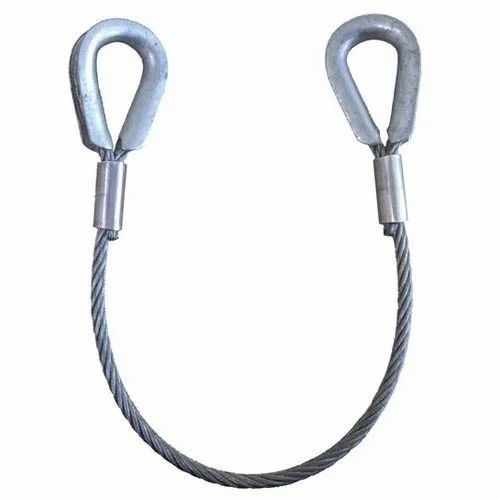
Have you ever wondered why wire rope slings come with tags showing load limits and why it’s so important to follow them? They do the heavy lifting, literally. But the truth is, using them without understanding their load capacity can be risky, not just for the equipment but also for the people around. Let’s break down wire rope sling load limits in simple terms and also look at what can be done to make their use safer.
Wire rope slings are basically strong ropes made of multiple strands of wire twisted together. Their strength makes them popular in industries like construction, oil and gas, shipping, and manufacturing. However, every sling has a limit on how much weight it can safely handle. Think of it like a safe speed limit for your car. If you stay within the limit, everything runs smoothly. But once you cross it, the risk of accidents goes up.
A thicker sling can carry more weight compared to a thinner one, but the design and type of rope also play a role. For example, a rope made of six strands with seven wires each will not perform the same as one made with more wires and layers. That is why manufacturers always provide load charts or tags that show exactly how much a sling can lift safely. Checking these details before use is one of the easiest ways to avoid accidents.
Another factor that changes the load limit is the lifting angle. Most of the time, they are used in pairs or more, attached at angles to spread the weight.Imagine trying to carry a heavy bag between two people. If you both hold it straight up, it feels lighter. But if you both spread out wide, the pressure on your arms increases. The same rule applies to slings. Understanding angles and how they affect capacity is key to safe lifting.
The type of hitch also matters. A hitch is simply the way the sling is attached to the load. In a basket hitch, the load is spread across two legs of the sling, which increases capacity but requires balance. Knowing which hitch to use is like knowing the right tool for the job. Using the wrong hitch for a heavy lift is asking for trouble.
Inspection is another step that cannot be ignored. Just like you would not drive a car with worn-out brakes, you should not use a wire rope sling that has visible damage. Broken wires, rust, kinks, or crushed sections are all warning signs that the sling is no longer safe. Regular inspection before every use can save you from bigger problems later. If there is any doubt about the condition, it’s better to retire the sling than risk it breaking mid-lift.
Safe practices also include proper storage. Wire rope slings should be stored in a dry place, away from chemicals or moisture that can cause corrosion. Throwing them on the ground after use is one of the fastest ways to shorten their life. A simple rack or hooks to hang them neatly can keep them in good shape for longer.
No matter how strong or expensive the sling is, if the operator does not understand load limits, angles, or hitch types, mistakes will happen. Simple training sessions on how to read sling tags, check angles, and spot damage can make a big difference in workplace safety.
Finally, always keep spare slings ready. In busy workplaces, there is always pressure to finish tasks quickly. If a sling is damaged and there are no replacements available, workers may be tempted to use it anyway. Having spare slings on hand ensures no one has to compromise safety just to save time.
In simple words, wire rope sling load limits are there for a reason. They are not just numbers on a tag but safety markers that help prevent accidents. Staying within these limits, choosing the right hitch, maintaining proper angles, inspecting regularly, and storing carefully can make wire rope sling use safer and more effective. By treating slings with care and respecting their limits, industries in the UAE and beyond can save time, money, and most importantly, lives.





Write a comment ...